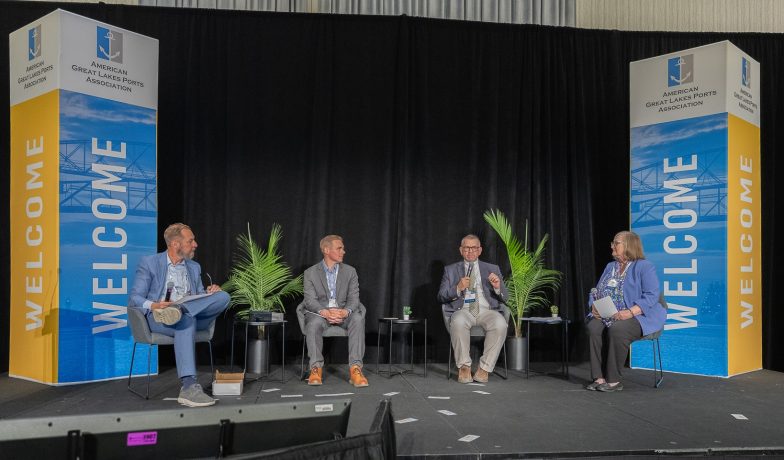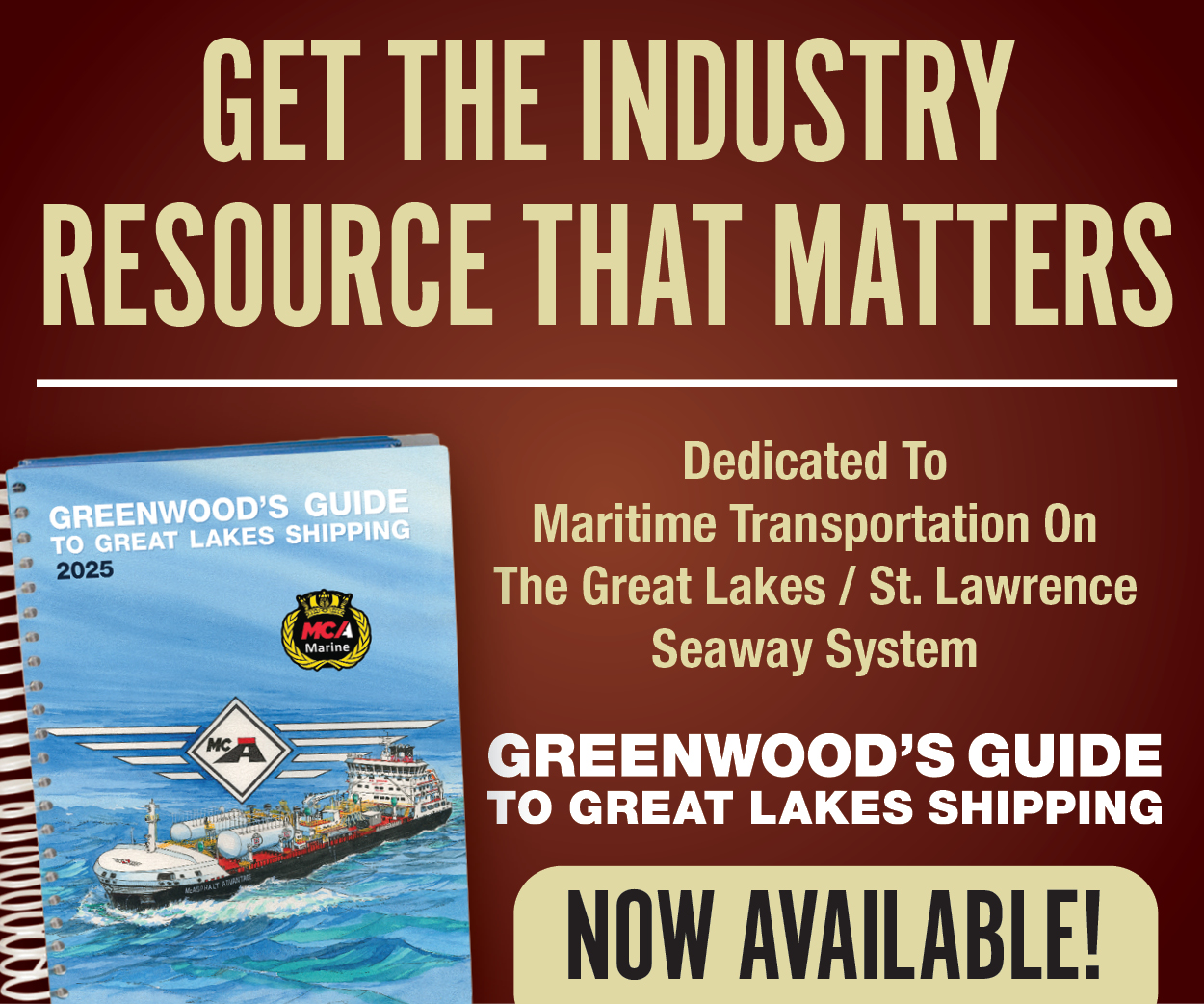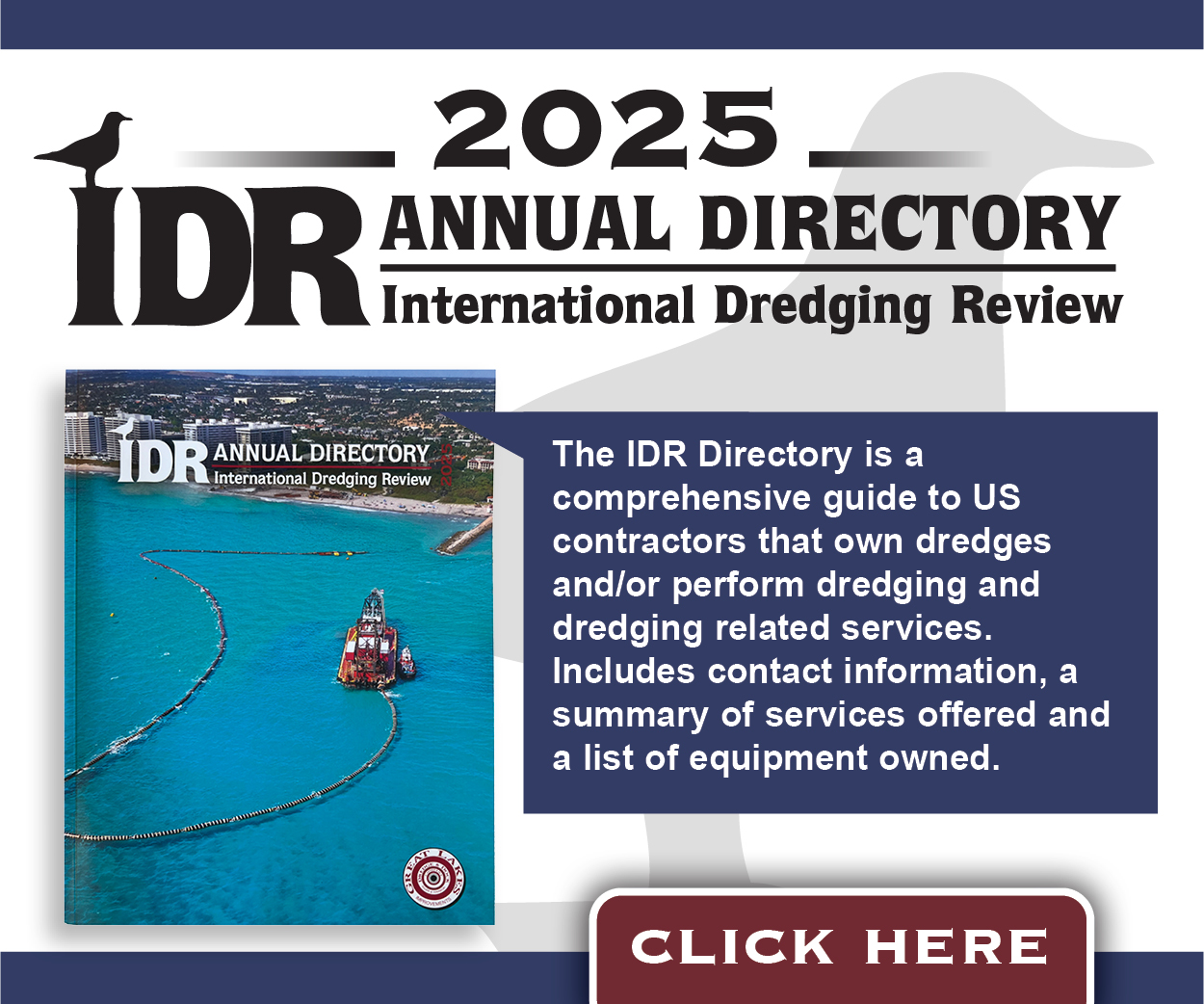Industry Stakeholders Gather for the AGLPA 2025 Conference
The annual American Great Lakes Ports Association (AGLPA) Conference took place August 14 and 15. Industry stakeholders and leaders met for the two-day conference at Loews Chicago Hotel. AGLPA Executive Director Brian Oszakiewski, Capt. Paul C. LaMarre III, president of the AGLPA, and Erik Varela, executive director of the Illinois International Port District, the host port, kicked off the 2025 conference by welcoming attendees and highlighting the economic value the Great Lakes-St. Lawrence Seaway contributes to the shipping industry.
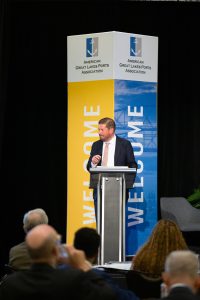
A Binational Partnership
Oszakiewski then introduced Mike McCoshen, the new administrator of the Great Lakes St. Lawrence Seaway Development Corporation (GLS), which oversees the U.S. side of the Great Lakes-St. Lawrence Seaway System. McCoshen stressed the importance of the binational partnership between the United States and Canada. “We are fully committed to continuing this relationship,” McCoshen said. “I am proud and honored to serve as the new administrator of the GLS, and it is a privilege I don’t take lightly. As I look ahead, my focus will be on innovation, growth and operational excellence, delivering consistent and reliable results every day.”
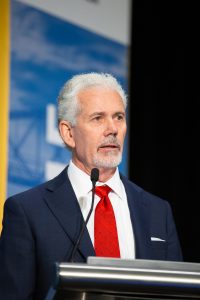
McCoshen said this is an exciting time for the United States, as the Trump administration works to grow the maritime industry. He said funding opportunities like the Maritime Administration’s (MarAd) Port Infrastructure Development Program (PIDP) and the Small Shipyard Grant Program are supporting critical infrastructure improvements and revitalizing maritime jobs. “These investments will strengthen supply chains and improve efficiency,” he said.
Jim Athanasiou, president of the St. Lawrence Seaway Management Corporation (SLSMC), which operates the Canadian side of the Great Lakes-St. Lawrence Seaway, echoed McCoshen’s sentiments about the binational partnership and success of the system. “This is not simply a handshake,” Athanasiou said. “This is a fully integrated system that operates on both sides, and the partnership is a very important piece to running the system efficiently.”
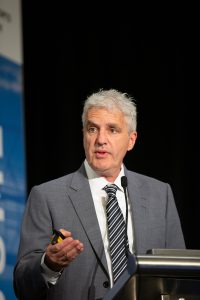
Athanasiou talked about the urban centers around the Great Lakes, with expectations that the population will increase significantly over the next 50 years, leading to roads and railways becoming more crowded. “We often talk about how maritime is part of the solution, but in the next 20 years it will be the solution,” he said. “The maritime industry can relieve strain. Unlocking the capacity of the Great Lakes-St. Lawrence Seaway with short sea shipping can make a difference. This is the direction we must work in to take freight pressures off the rest of the world.”
Sang H. Yi, acting administrator for MarAd, said the agency needs to focus on four key areas: people, ships, cargo and ports. “All four of these pieces must operate together,” he said. “People are the most important. It isn’t only about developing skilled mariners; it is about developing those adjacent fields that are impacted in the region.”
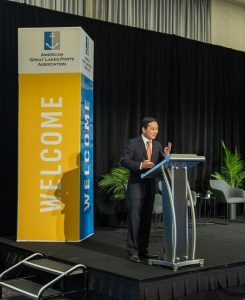
Yi also discussed the imbalance of PIDP grants between coastal and Great Lakes ports. “In Washington D.C., sometimes inland is forgotten,” he said. “As long as I am at MarAd, it will never be forgotten.”
He encouraged stakeholders at the conference to use their voices and tell lawmakers what the maritime industry needs to look like going forward. “The people in this room who have the experience in all sectors are the experts,” Yi said. “This is a pivotal time, and if we want maritime dominance, we must make it happen. You are the solution.”
Jim Weakley, president of the Lake Carriers’ Association (LCA), spoke about the importance of the Jones Act, the successes of the Great Lakes Task Force and why the construction of the New Lock at the Soo is necessary for the future of trade on the Great Lakes-St. Lawrence Seaway. Despite the Trump administration’s One, Big, Beautiful Bill not including a new icebreaker for the region, Weakley said the LCA will continue to push for funding. “We are closer than we have ever been,” he said. “We need more icebreakers to keep commerce moving on the Great Lakes.”
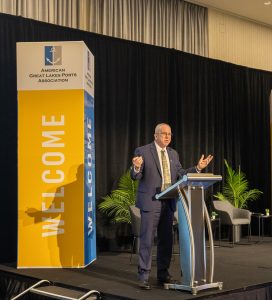
Importance of Infrastructure
Updating and preserving infrastructure on the Great Lakes-St. Lawrence Seaway System was a big topic of discussion at the conference. Jennifer Homendy, chairwoman of the National Transportation Safety Board (NTSB), spoke about the federal agency’s work investigating transportation accidents across the United States. In response to the Francis Scott Key Bridge collapse after it was struck by the container ship Dali on March 26, 2024, Homendy said the NTSB recommended that the United States Coast Guard and local municipalities conduct studies to determine which bridges need infrastructure updates. In March, the NTSB released a report identifying 68 U.S. bridges at risk of collapse due to a collision. About one dozen bridges on the Great Lakes are on the list, including the Chicago Skyway Calumet River Bridge, the Mackinac Bridge, the Seaway International Bridge and Thousand Islands Bridge. However, Homendy stressed that the level of collapse is not known. “We need bridge owners to implement our recommendations, conduct reports and send the findings to us,” she said. “It is essential that they know the risk level, and Great Lakes stakeholders should know it, too. The economic impact of a bridge collapse is far-reaching, but the human toll is just as detrimental.”
The U.S. Army Corps of Engineers provided updates on several infrastructure projects and dredging operations on the Great Lakes. Mollie Mahoney, the Corps’ project manager at the New Lock at the Soo, provided an update on the construction of the new lock in Sault St. Marie, Michigan, reporting that the lock is still on schedule for completion in 2030.
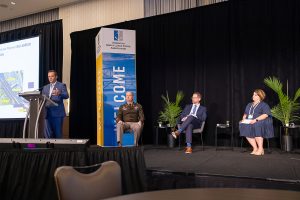
Kristine Meyer, the Corps’ Chicago district chief of the Lake Michigan Project Office, shared that Chicago is using innovation such as sonar and LiDAR to improve and repair rubble mound breakwaters. Meyer said this technology provides better visibility and analysis to target specific areas that need to be repaired. Adam Hamm, Buffalo district chief of operations for the Corps, said work is underway on a dredge material management plan to obtain more federal funding for dredging. Hamm also provided an update on the project underway at Black Rock Lock to use fiber reinforced polymer (FRP) in the construction of new bulkheads. The Black Rock Lock will be the first FRP fabrication on the Great Lakes. The FRP bulkheads are designed to be as strong as steel, corrosion resistant and low maintenance. Hamm reported that the guard gates for dewatering the lock have failed. The team is working on a plan to fix the gates so the project can continue. Hamm said the Corps hopes to have the bulkheads fabricated and installed over the next two years.
Funding and Investments
Joe Cappel, vice president of business development for the Toledo-Lucas County Port Authority, moderated a panel on the importance of funding, upcoming grant application deadlines and how U.S. ports can take advantage of obtaining federal funds. Sylvonica Madlock, the executive officer of GLS, led a panel focusing on United States and Canadian infrastructure investments for the Great Lakes-St. Lawrence Seaway with Peter Hirthe, director of the Office of Trade & Economic Development at GLS, and Ken Carey, general manager, commercial at SLSMC. Carey highlighted some of Canada’s investments, including the recent replacement of the gates for Lock 7 at the Welland Canal and Ontario’s $250 million investment to support Canadian shipbuilding. Hirthe spoke about the success of the PIDP grants, which have helped U.S. ports on the Great Lakes to expand and renew aging infrastructure. “Next year there will be four American ports operating with containers on the Great Lakes, and there is interest on the Canadian side as well,” Hirthe said. “If we can get that service up and running, we will be a better binational supply chain.”
U.S. shipbuilding initiatives, a look at how artificial intelligence (AI) can advance ports, how passenger cruising is contributing to the regional economy and recent expansions at the National Museum of the Great Lakes in Toledo, Ohio, were some of the additional topics covered during the annual conference.
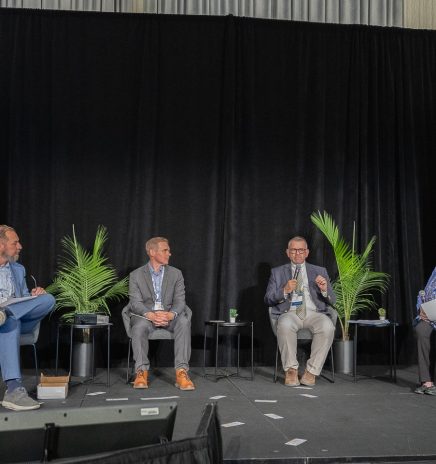
Industry Stakeholders Gather for the AGLPA 2025 Conference
Photos by Victor Studio – Chicago, Illinois The annual American Great Lakes Ports Association (AGLPA) Conference took place August 14 and 15. Industry stakeholders and leaders met for the two-day... Read More
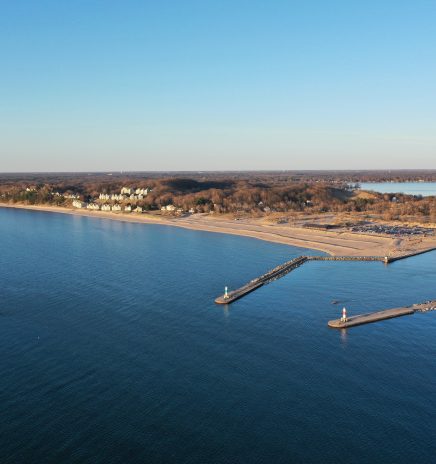
USACE Begins Dredging at Holland Harbor
The U.S. Corps of Engineers, Detroit District will start dredging the entrance to Holland Harbor as early as Thursday, April 24 to remove shoaling across the federal channel. Surveys indicate... Read More

